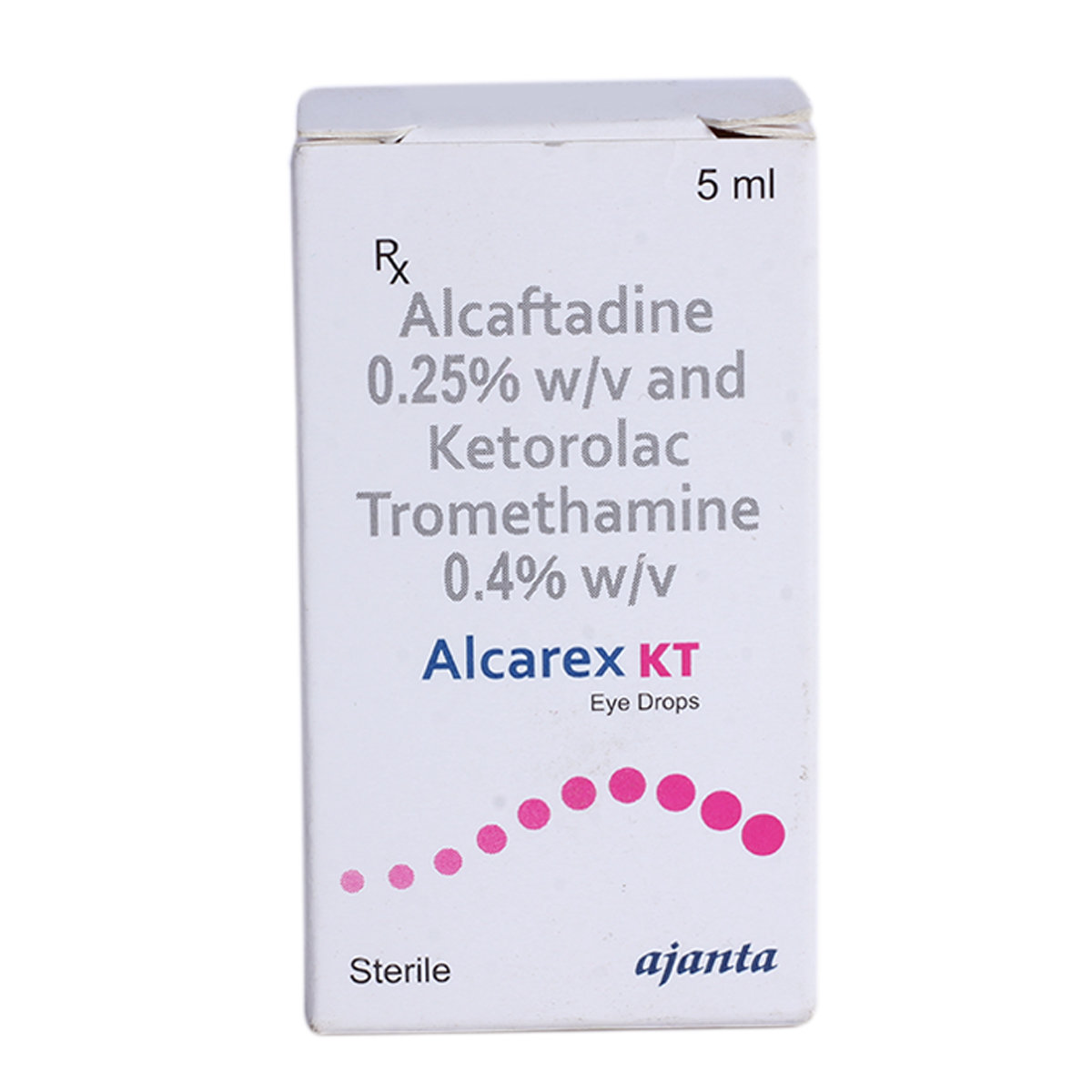Alcaftadine+ketorolac
About Alcaftadine+ketorolac
Alcaftadine+ketorolac belongs to the group of ophthalmic agents used to treat symptoms of allergic conjunctivitis. Allergic conjunctivitis is a common eye inflammation caused by an allergic reaction to allergens, especially during hay fever season. It is the body’s reaction against substances it considers potentially harmful.
Alcaftadine+ketorolac contains Alcaftadine and Ketorolac. Alcaftadine blocks the action of histamine, which causes allergic reactions such as itching, redness, and swelling. Ketorolac blocks the chemical messengers that cause pain and inflammation. Together, Alcaftadine+ketorolac treats allergic conjunctivitis.
Alcaftadine+ketorolac is meant for ophthalmic use only. Use it in the dose and duration advised by the physician. In some cases, Alcaftadine+ketorolac may cause certain common side effects such as irritation, burning sensation and sore eyes. Most of these side effects do not require medical attention and will resolve gradually over time. However, you are advised to talk to your doctor if these side effects persist.
It is advisable to inform the doctor if you are allergic to any of the components in Alcaftadine+ketorolac. Notify the doctor if you have a known allergy to NSAIDs. Consult your doctor if you are pregnant, planning to get pregnant, or if you are breastfeeding. Keep your doctor informed in case you are waiting to undergo any surgery or dental procedure. Avoid driving or operating heavy machinery immediately after using Alcaftadine+ketorolac as it may cause blurred vision.
Uses of Alcaftadine+ketorolac
Medicinal Benefits
Alcaftadine+ketorolac contains Alcaftadine and Ketorolac. Alcaftadine is an anti-histamine. It blocks the effects of histamine, a chemical produced in the body that mediates allergic reactions. Ketorolac is a non-steroidal anti-inflammatory drug. It works by reducing the levels of inflammatory substances called prostaglandins that cause pain and inflammation. Thus, Alcaftadine+ketorolac treats allergic conjunctivitis.
Directions for Use
Storage
Side Effects of Alcaftadine+ketorolac
- Sore eyes
- Burning sensation
- Irritation
Drug Warnings
Alcaftadine+ketorolac should not be used in case of any known allergy to either of the components or in case of an allergy to NSAIDs. Inform your doctor if you have bleeding/blood-clotting disorder, diabetes, arthritis, glaucoma, or dry eye syndrome. Consult your doctor if you are pregnant or breastfeeding. Alcaftadine+ketorolac may cause blurring of the vision immediately after use; so, avoid driving or operating heavy machinery until your vision is clear. Avoid touching the tip of the dropper as it may contaminate the solution.
Drug Interactions
Drug-Drug Interactions: Alcaftadine+ketorolac may interact with blood thinners (warfarin).
Drug-Food Interactions: No interactions found.
Drug-Disease Interactions: Inform your doctor if you have glaucoma, dry eye syndrome, arthritis, diabetes, or bleeding/blood clotting problems.
Drug-Drug Interactions Checker List:
Safety Advice

Alcohol
cautionLimited information is available. Please consult your doctor before using Alcaftadine+ketorolac.

Pregnancy
cautionLimited information is available. Please consult your doctor if you are pregnant before using Alcaftadine+ketorolac.

Breast Feeding
cautionLimited information is available. Please consult your doctor if you are breastfeeding before using Alcaftadine+ketorolac.

Driving
cautionAlcaftadine+ketorolac may temporarily blur your vision. Avoiding driving or operating machinery until your vision is clear.

Liver
cautionLimited information is available. Please consult your doctor in case of any concerns.

Kidney
cautionLimited information is available. Please consult your doctor in case of any concerns.

Children
cautionLimited information is available. Please consult your doctor in case of any concerns.
Habit Forming
Diet & Lifestyle Advise
- Try to include heart-healthy omega 3 fatty acid containing food/drinks in your daily diet.
- Fruits and vegetables, which contain Vitamin A and C, help improve vision.
- Include dairy foods in your diet that may improve eye health.
- Indulge yourself in aerobic exercise that relaxes eye muscles and pressure built inside them.
- Consume more leafy vegetables, including cabbage, kale, and spinach as they help improve eye health.
Patients Concern
Disease/Condition Glossary
Allergic Conjunctivitis: Allergic conjunctivitis, also called pink eye is the inflammation of the conjunctiva due to an allergic reaction to foreign substances such as spores, pollen or grit and grime. Symptoms include redness, grittiness, pain, itching and tearing of the eyes.
FAQs
Alcaftadine+ketorolac works by reducing the histamine-induced allergic reaction and its effects. Alcaftadine+ketorolac also relieves the eyes of soreness and pain.
You are recommended to maintain a time gap of 5 minutes between using Alcaftadine+ketorolac and other eye medications. However, please consult a doctor before using Alcaftadine+ketorolac with other medicines.
Alcaftadine+ketorolac may cause temporary blurred vision immediately after use. Therefore, do not drive or operate machinery until your vision is clear.
Avoid wearing contact lens while using Alcaftadine+ketorolac. Remove contact lens before using Alcaftadine+ketorolac and re-insert them after 10minutes of using Alcaftadine+ketorolac. Do not wear contact lens if your eyes are red.
You are recommended to use Alcaftadine+ketorolac for as long as your doctor has prescribed it. However, if the condition persists or worsens after three days of treatment with Alcaftadine+ketorolac, please consult a doctor.


